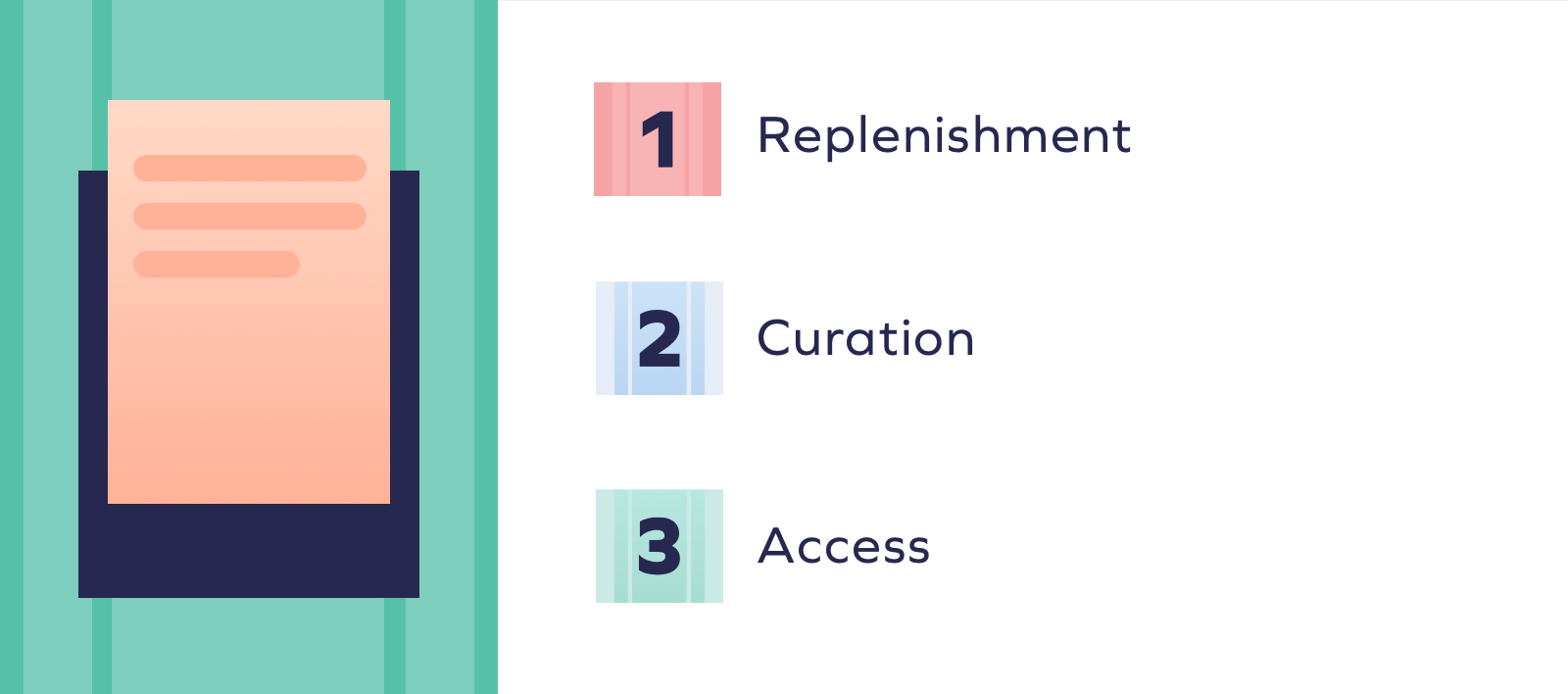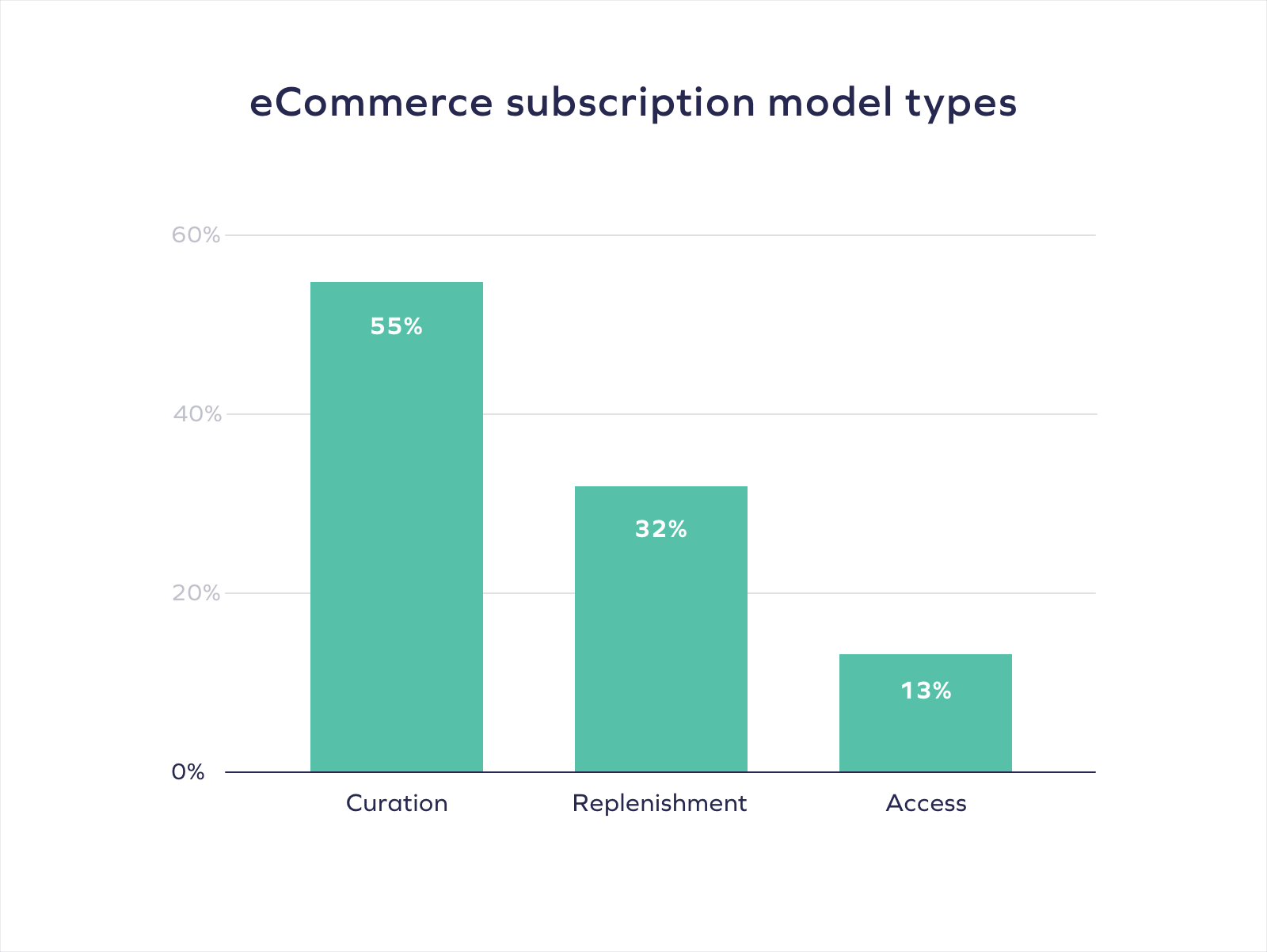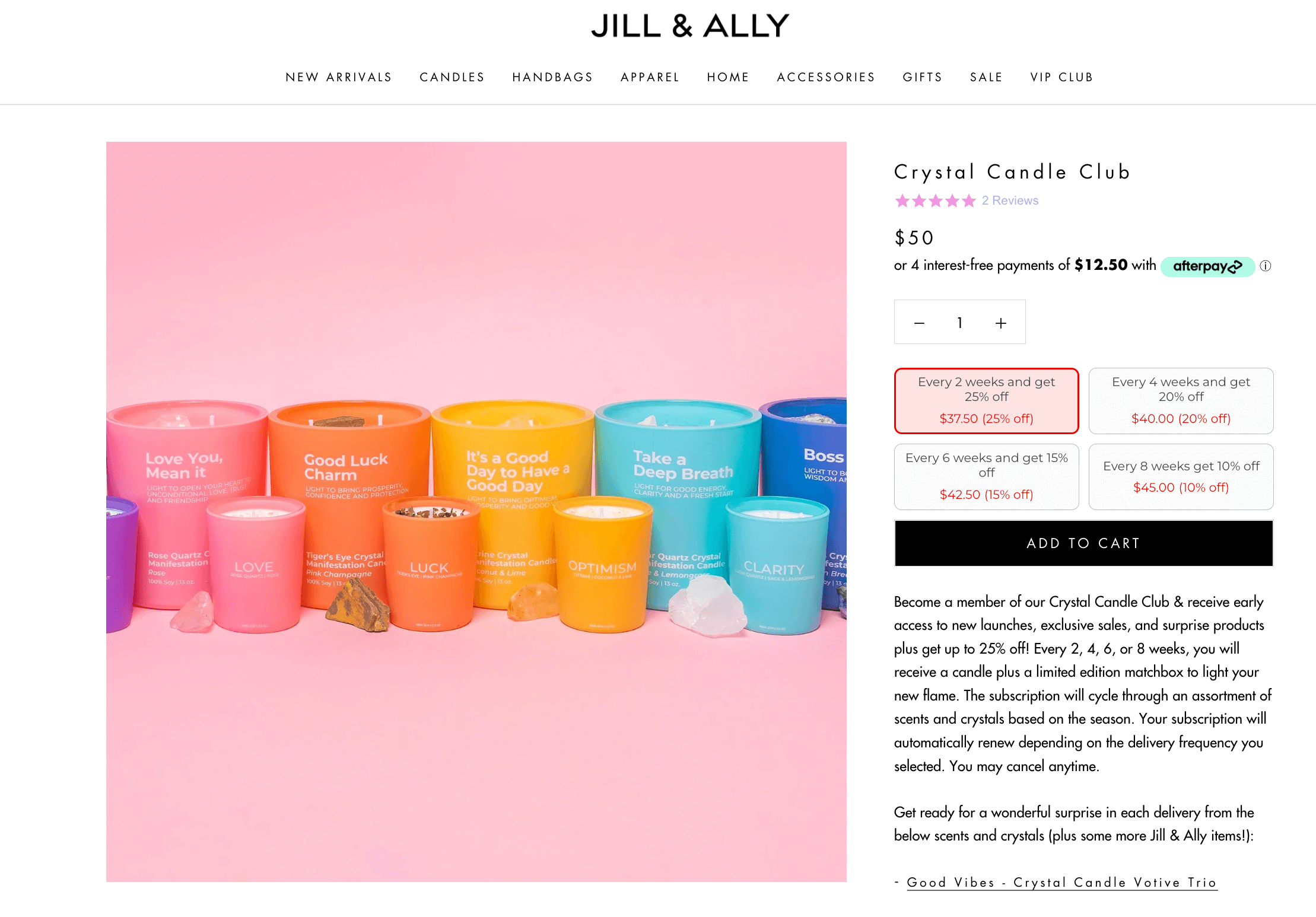Add Recurring Revenue With Subscription Models
Subscription models are convenient for customers and profitable for brands. We’ll cover their benefits and challenges, and how businesses who want to explore this model can get started.
 Product Page Guide
Product Page Guide
Subscription models are convenient for customers and profitable for brands. We’ll cover their benefits and challenges, and how businesses who want to explore this model can get started.
Subscription models in eCommerce have been trending upward for years now, and with good reason. Consumers like them for their convenience, while retailers enjoy returning customers.
In this chapter, we’ll take a look at the different types of eCommerce subscription models, the benefits and challenges of offering them, and how businesses who want to explore this model can get started.
The COVID-19 crisis has also ramped up subscriptions, as consumers are looking to stock up on items and ensure they’ll have what they need if store supply chains are disrupted again. In fact, a survey from deal site Coupon Follow found that 20% of people had purchased subscription boxes in order to have products available to them during the pandemic.
There are three basic types of subscriptions: replenishment, curation, and access.

This type of subscription allows customers to sign up for regular deliveries of items they buy habitually. These are typically offered as either “subscribe and save” plans, where you pay less to receive an item at regular intervals (like Amazon Subscribe & Save) or as subscription boxes (like Dollar Shave Club).
These subscription services offer new, curated, or personalized items on a regular basis, usually weekly or monthly. They include meal kits like Blue Apron or Hello Fresh; apparel boxes like Stitch Fix or Trunk Club; and beauty boxes like Birchbox and Ipsy.
This type of subscription provides consumers with exclusive products, discounts, and other perks for a subscription fee, usually monthly. Basically, it brings the wholesale club experience online. Retailers like Thrive Market and JustFab are examples of this model. In order to shop for discount organic products at Thrive Market, you need to pay a subscription fee. At JustFab, you can shop without paying for a membership, but you’ll pay higher prices.
According to McKinsey & Company, curation services are the most popular, with 55% of total subscriptions; replenishment accounts for 32% of subscriptions and access subscriptions for 13%.

Brands shouldn’t feel limited by these types, however. Some brands are getting creative with the subscription model by allowing customers to build their own experience. Take lifestyle brand Jill & Ally, for example.

Customers get to choose the quantity and frequency of their products. In doing so, they become even more invested in their subscription with the brand.
So, why should you consider a subscription model for your brand? Here are a few reasons.
This one may seem obvious, but it has to be said. If your customers are purchasing a monthly subscription, they are likely to spend more money over the long-term than they would with one-off sales.
When you offer subscriptions to your customers, it makes it easier for you to make revenue forecasts. If you know that you’re going to bring in $30,000 per month from subscriptions, for example, you’ll have an idea of what you can comfortably spend on your monthly marketing budget.
Subscriptions give you a chance to develop strong relationships with customers over time. Because you will have more frequent communication with them, you’ll have more opportunities to upsell or cross-sell to them. Repeat customers are 50% more likely to make another purchase than new customers, because you have a relationship with them.
Subscriptions also provide you with more actionable data. You learn more about customer preferences around products and frequency. This will enable you to segment your audience for better targeting, and use your existing customer base to build lookalike audiences for search and social media advertising.
Offering subscriptions to your customers gives you a unique opportunity to turn a transaction into an ongoing relationship. You can then use that relationship to grow your bottom line.
Subscriptions aren’t right for every business, but more businesses than you think could benefit from offering them. If you like the idea of offering a subscription service to your customers but don’t know where to start, this guide will help you figure it all out.
In this step, you’re going to do a deep dive into your customer data. Are there products that customers buy more than once that you can offer as a subscribe and save option? Are there products that customers typically buy together that you can bundle? Look at your customers’ buying patterns, and see if anything jumps out.
You can also run a survey with your existing customers, to see what type of subscriptions they are interested in. Make sure to include open-ended questions, as you might get some ideas you hadn’t considered.
Are any of your competitors offering subscription options? If so, can you offer something better? Do an analysis to see where the opportunities are in your product category.
After these two steps, you should have an idea of what your subscription will look like.
This is where you tap into your most loyal customers to see what they think of your subscription offering. You can offer a free trial or a deep discount for a certain number of customers to take a test run. Then, you can survey them and tweak your offering based on feedback.
Managing a subscription requires a lot more work than one-off sales. Implementing a solution like Yotpo Subscriptions can make the process easier.
The next step is launching your subscription, but the work doesn’t end there. You’ll need to keep an eye on your churn rate, keep acquiring new customers, and ensure that you are consistently delivering value to your subscribers.
We’ve covered the benefits of subscription models for eCommerce, but now it’s time to discuss the drawbacks. Here are the four most common challenges you’re likely to encounter, and how to deal with them.
According to research from McKinsey & Company, nearly 40% of eCommerce subscribers have canceled their subscriptions. Why? Loss of novelty, and lots of competition.
Take meal kits, for example. Customers may get bored and want to try a different type of cuisine, and with most of them offering deep discounts to new customers, it’s easy to see why consumers hop from brand to brand.
Here are some ways to reduce churn:
Another reason why customers leave is because they didn’t understand how the subscription worked and weren’t happy with the service because of it. The best way to educate customers about subscriptions is to include a FAQ section on your website. Emphasize the fact that customers can cancel whenever they like, and explain how to do it. Make sure your FAQ is clear and straightforward, with no confusing jargon.
Your existing customers are going to be the audience most likely to subscribe, but what happens when you’ve exhausted that outlet?
Consider this: 84% of consumers believe recommendations from friends and family are the most trustworthy sources of information. That means you want to use your happy customers to do your marketing for you. There are two good ways to do this:
Managing subscriptions is a big job. You’ll want to work with a partner or service that offers expertise and ease of use. Most importantly, you’ll want to find a management service that easily integrates with your existing tech stack, like Subscriptions, which integrates with more than 30 services.
Subscriptions can be beneficial to almost any brand, and you don’t have to go all-in on them. Even just choosing a few products or a curated box can go a long way toward providing value to customers and giving your business a more predictable source of revenue.
“Yotpo is a fundamental part of our recommended tech stack.”
 Laura Doonin, Commercial Director
Laura Doonin, Commercial Director








